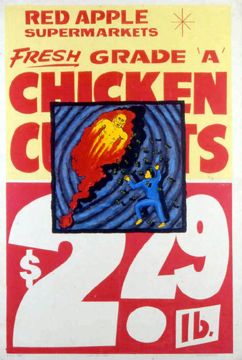In light of the recent debacle at the Smithsonian involving the removal of David Wojnarowicz’s A Fire in My Belly, I thought it might make sense to suggest some ways educators can get involved and make a stand in the midst of the controversy. While many may not have the opportunity to teach with the film itself or even work with films like it in the classroom, there’s no one saying we can’t teach with the events that have unfolded like laundry left sitting in the washing machine for a few days.
First of all, if you want a blow by blow account of the whole scenario, I would definitely check out Tyler Green’s Modern Art Notes, which has been on top of the situation from minute one. After you’ve done that, you may want to cancel any future school trips, personal visits, or financial contributions to the museum until G. Wayne Clough decides it’s finally time to speak in public about this, take some questions, and put the Wojnarowicz work back in the show. If the Mapplethorpe and Warhol Foundations are cutting funding, perhaps we should, too.
The next step may involve developing some questions you’d like to discuss with students. Questions such as:
- Does a museum have the right to remove work previously approved for an exhibition?
- Is censorship ever a good thing? If so, who has the right to decide what is “acceptable” when it comes to art?
- How does this series of events compare to previous attempts (both failed and successful) at censorship? What are the similarities and differences?
- How does censoring this work affect how it is viewed? For example, did Bill Donohue’s detestable statement and the events that have taken place as a result actually promote the work he finds an example of “hate speech”?
Finally, asking students to look into the symbols and metaphors Wojnarowicz used to speak with his art can allow for a gradual understanding of the work vs. a quick peek followed by harsh judgement. Let’s face it, that particular approach didn’t work for Rudy Giuliani at the Brooklyn Museum years ago and there’s no reason it should happen here, either. Getting past uncomfortable images, symbols and metaphors, in order to uncover the reasons particular images are used to make specific statements seems like a pretty worthwhile goal, especially in this case.





Pingback: Artemis, Egypt and the Art of Protest « theartofcoriandoli
Pingback: Teaching with Contemporary Art: The First Three Years | Art21 Blog